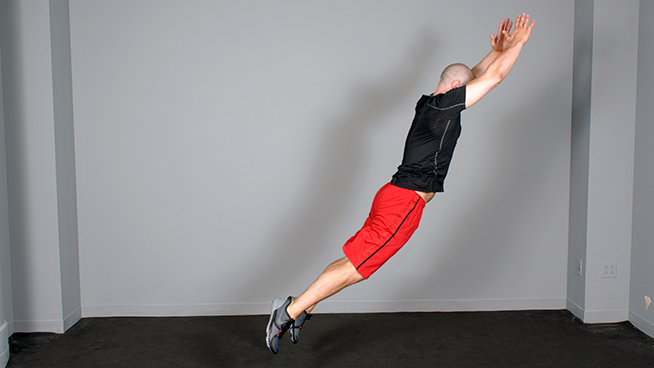This blog post is a follow up for a recent podcast episode we did on how to improve your running economy. You can check out the entire episode here:

Improving Endurance Performance
Strategies For Improving Economy
If the above explanation did not make sense, we can review more practical strategies that help improve running economy, that ultimately will help you get through your races easier and faster.
Resistance Training
Based off the info above though, research clearly shows that lifting weights and moving quick improve running economy. This means resistance training and plyometric training are essential for your program since they are incredibly effective for improving Running Economy. Many runners feel lifting will tighten them up, bulk them up, or slow them down, but the opposite is true.
Most forms of resistance training have shown to be helpful, but it is recommended to lift high intensity loads (80-95%) of your 1 rep max, at least once per week. Pick movements that train the entire body, but make sure you include the legs (squats, lunges, deadlifts) since running is a heavily lower body movement.
Plyometrics
Plyometric training is another great strategy, although there are many other benefits for including plyometrics in your routine. This refers to jump training or any other explosive movements like MB throws or clap push ups. These can be higher impact and stress on the joints, so limit each workout to only 2-3 explosive movements per workout. Keep the reps lower (<8) and focus on max effort.
Stretching
Flexibility is another training tool we can use to improve economy. The better range of motion you have the easier it is for your to move through optimal range of motion. For example if you hip flexors are stuck in a short position and not allowing full range of motion through hip extension, you are limiting the power and force that the glutes can generate during your gait cycle.
If you tend to be tighter and not flexible, make this a priority. Not only will it help with performance but it will dramatically reduce injury and allow you to move the way you are suppose to move.
 For preworkout, it is still recommended to focus more on foam rolling (self myofascial release) and dynamic stretching though. Traditional static stretching performed immediately before exercise reducing the force we generate from the stretch of the muscle, previously mentioned. If you do perform static stretching, where you hold a stretch for 30 sec or longer, make sure you following it up with dynamic movements to help restores some of the lose power.
For preworkout, it is still recommended to focus more on foam rolling (self myofascial release) and dynamic stretching though. Traditional static stretching performed immediately before exercise reducing the force we generate from the stretch of the muscle, previously mentioned. If you do perform static stretching, where you hold a stretch for 30 sec or longer, make sure you following it up with dynamic movements to help restores some of the lose power.
Uphill Sprinting
On the podcast episode, we discussed a study that looked at different types of uphill sprint interval training methods and how they improved running economy. In short, any interval length they used improved economy but one strategy worked better than the rest.
With uphill sprinting we see the same effects from power training and resistance training. This is a maximal effort movement and requires more muscle fibers to activate. Also, researchers found that uphill sprinting actually improve gait mechanics by increasing stride rate, which was another way to improve the subjects economy.
The best strategy they found in this study was the highest intensity workouts. These involved the shortest duration intervals used in the study. So you see, sometimes less is really more. Here is the exact 6 week routine they used for this group in the study below. Try this out in your training program. Stick to 1 day a week of uphill sprinting workouts only. You still want to include 1-2 days of lower intensity running, plus your strength and plyo work.
 Uphill Sprinting Protocol:
Uphill Sprinting Protocol:
*Perform a thorough warm up before each workout
Week 1 – 12 rounds of 8 second sprints (Rest 50 seconds between rounds)
Week 2 – 16 rounds of 10 second sprints (Rest 60 seconds between rounds)
Week 3 – 20 rounds of 10 second sprints (Rest 60 seconds between rounds)
Week 4 – 20 rounds of 12 second sprints (Rest 70 seconds between rounds)
Week 5 – 24 rounds of 10 second sprints (Rest 60 seconds between rounds)
Week 6 – 24 rounds of 12 second sprints (Rest 70 seconds between rounds)
Remember, this is the protocol used in the study and is merely a guide. If you cannot complete this many rounds, then just do as many as you can and progress. Keep sprints to 12 seconds or less so they max effort. And if the rest given is not long enough, then rest longer.
This may be repetitive, but always remember not all workouts should be high intensity. This workout is designed to be very high effort, so follow it up with a rest day or low intensity workout. A sample week during this training program might look like this:
Monday – Strength Workout
Tuesday – Long Distance Run
Wednesday – Rest Day
Thursday – Strength Workout
Friday – Uphill Sprint Intervals
Saturday – Rest Day
Sunday – Long Distance Run
Give it a try and let me know how it goes. Keep working hard!
Aroo!
Mike Deibler MS, CSCS, SGX
Spartan Underground

